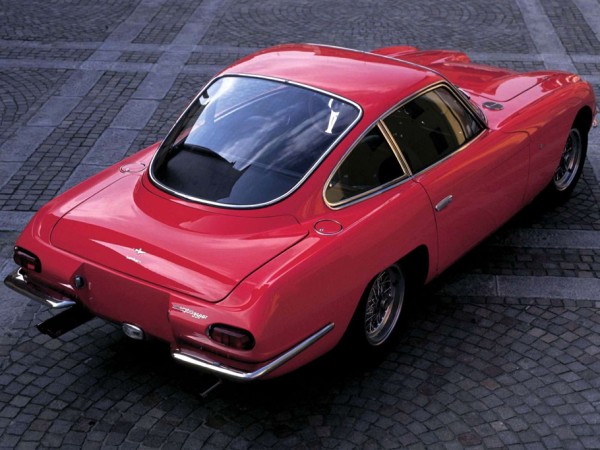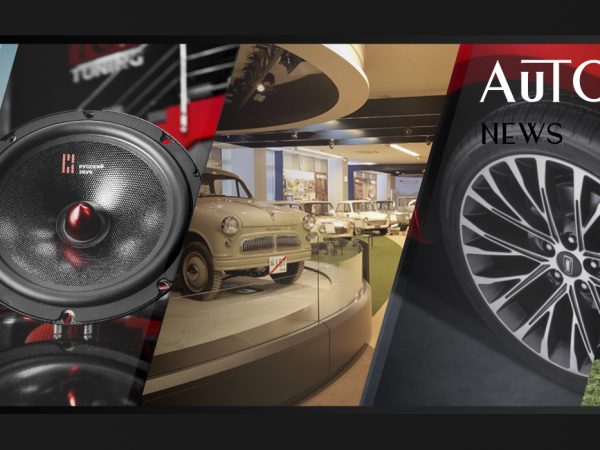Lamborghini 350 GT
Together with the spring weather that we had all been waiting for,
news reached us this week that Lamborghini officially returned to Russia, distributed by Crocus Group.
It’s difficult to find a car lover who doesn’t have a soft spot in his or her heart for Lamborghini. They have such a colourful history and we love them for making cars that explode with personality, to the point that some of their cars have occasionally looked more like space ships than automobiles.
A book could be written about Lamborghini and their history, in fact several have been. But I’ll save you the trouble of going shopping and let you in on the story of the supercar that could only ever have been made in Italy.
Ferruccio Lamborghini founded the company in his name in 1963. Before that, he had made his fortune building tractors. In fact Lamborghini tractors are still being made today, and you might find one in a field nearby. Although you’re slightly more likely to find them in a field in Italy with a proud farmer on top of it. Anyway, tractors was where the money was, but Ferruccio’s heart was with cars.
Having the money available to start a car factory, signore Lamborghini founded Automobili Lamborghini and they would be built in Sant’Agata Bolognese. Sounds like a tasty place to make cars, I know. He had struck a deal with communist politician leaders of the area to receive favorable tax rates, he was quite the businessman.
But as I mentioned he also loved cars, and had owned quite a few nice cars already at the time including several Ferrari’s. He wasn’t entirely happy with the Ferrari philosophy however, and considered them too noisy and uncomfortable for road use. When one time his Ferrari suffered a broken clutch, he discovered that the same clutch was used as in some of his tractors. When he asked Ferrari for an improved clutch, worthy of the car, they sent him away pointing out that he was only a tractor maker who knew nothing about sports cars.
ПLamborghini’s first prototype was introduced at the Turun Auto show as the 350 GTV in 1963, and would become its first production car as the 350 GT a few months later. It was well received by journalists, but although it would build several models in the following years, the car that really put Lamborghini on the supercar map was the legendary Miura.
In fact, it could be argued that Lamborghini were the ones who actually invented the first supercar as we know them today. The Miura was the first 2-seater mid-engined sportscar and at the time of its launch it was the fastest production car in the world. It was also a stunningly beautiful car, and those that remain today of the 764 that were build between 1966 and 1972 have become serious collectors items almost worth their weight in gold. Owning a Miura is the clearest sign anybody can send into the world that they are truely crazy about cars. It is powered by a musical V12 that rivals the best works of Mozart and Bach.
![]()
Lamborghini Miura
All this time however, Ferruccio Lamborghini stubbornly refused to take his company into racing. He wanted his cars to be true road cars, reliable and usable. He allowed no distractions from this goal, not even single prototypes. The company introduced and sold models such as the Islero and Espada, which appear to have almost been forgotten by history itself. The Espada was actually the best selling Lamborghini they had ever made back then, and in their own right they were fabulous cars. The reason then that they remain largely forgotten, might be the car that they would produce in 1974 as successor to the Miura: the Countach.
The Lamborghini Countach looked like no other car on the planet when it was launched. Come to think of it, I don’t think a car has been made since then that does. It was wild, it was crazy, and in the 80s and 90s you would have struggled to find a boy’s bedroom that did not have a Countach poster on the wall.
![]()
Lamborghini Countach
My wall had one. My friend’s wall had one too, and he didn’t even like cars. The Countach was brilliantly styled, a true super car. Though super-super-supercar might be more accurate, judging by the reactions of the people on the sidewalk as you drove by. You only have to look up what normal cars looked like in 1974 to realize what an extraterrestrial looking machine it was – and still is today.
Of course it was nearly impossible to drive as well. In fact it was even difficult to get in to, this was the first car to feature “scissor” doors that opened upwards. Extremely cool, but practical, not so much. And if you managed to build up the necessary strength in your legs and arms to operate the steering, clutch and gearbox you might still not get very far before it broke down. This was a car to be looked at, it was so special that driving it could only ruin the experience.
Already a few years earlier Ferruccio’s companies had gotten into financial problems at the hands of a global crisis. He had 49% of Lamborghini’s shares left when he sold his remaining stake in 1974 and retired just as the Countach went into production. Supercars do not tend to be bestsellers when there is an oil crisis on, and Lamborghini would enter bankruptcy in 1978. Swiss brothers Jean-Claude and Patrick Mimran took control of the company which they would fully own by 1984. Lots of money was injected into the company, several projects started, but they would eventually fail to turn around Lamborghini’s fortunes. In 1987, the american giant Chrysler acquired the company.
By this time, Lamborghini was working on a successor to the Countach. Their next supercar would be called Diablo, and it was originally drawn by the same designer who drew the exterior for the Miura and Countach. This man, Marcello Gandini, made a design that apparently set some suits on fire back in the corporate headquarters in America. The Americans decided to let their own design team modify Gandini’s design, resulting in more rounded shapes and a car that looked a lot like…a car. Marcello Gandini was said to be unimpressed of the final result, but we can safely assume that he used stronger words than that.
![]()
Lamborghini Diablo
The Diablo launched in Monaco in early 1990, and like its predecessors it could lay claim to the title of fastest production car in the world. Still powered by a large V12 engine, it was similarly difficult to drive and many owners spent most of their time just looking at it instead. But it was a sales success, for a little while. This car single-handedly made Lamborghini profitable, for a short while. When sales plummeted and the American owners realized that it was never going to be a success on their side of the ocean, they passed on the company to MegaTech in 1994.
MegaTech was a holding company, registered in Bermuda and owned by Indonesians. You can guess where it goes from here. In 1998 a financial crisis in Asia caused Lamborghini to change hands again, this time it was the German Volkswagen Group who purchased Lamborghini through their Audi brand.
From this time onwards, things made a little bit more sense. An Italian sports car maker owned by Germans somehow seems like a recipe that could work. German technology and organisation with Italian flair and styling, it’s one of the better combinations I can think of.
The first car to come out of the oven under German ownership was the Murciélago, succeeding the Diablo in 2001. It was the first all-wheel-drive supercar they had made, replacing the traditional rear wheel drive layout. It’s not too difficult to imagine where that idea came from. And for the first time in several decades, the new car could actually be driven by normal people. Its somewhat gigantic size didn’t make it a very good car to get the morning newspaper with, but it was a world of change when compared to the Countach or Diablo
The verdict was unanimous: the Murciélago was a new breed of Lamborghini.
![]()
Lamborghini Murciélago
Lamborghini turned into a stable, profitable company and in 2003 it launched a smaller, more user friendly car they named the Gallardo. It had a new and smaller – but similarly loud – V10 engine instead of its big brothers’ V12. It also came with all-wheel-drive and for many people this car really opened up the possibility of owning a “Lambo”. It was no harder to drive than the average Audi, looked stunning and sounded like a nest full of bees that has just been violated by some sort of honey seeking animal.
![]()
Lamborghini Gallardo
It should be noted that the technology transfer between Germany and Italy was not one-way, after a while Audi began using very similar V10 engines in its roadcars, and even launched its own sportscar the R8 which is really just about the same as a Gallardo but “full German” edition. Or maybe it’s a “less Italian” edition. Anyway, not important. Both are brilliant.
The Gallardo is still with us today, quite a few updates have been made to the original design and engine power keeps increasing each time they give us a new version. So that’s good obviously.
The Murciélago has since been replaced by the Aventator. The V12 by now is producing 700 horsepower, which is a significant amount of horsepower. I don’t think too much more will be needed before we can actually escape the earth’s gravity with it. True to Lamborghini history, the Aventador is agressively styled with sharp edges and is not entirely dissimilar to a stealth plane. If you want to get noticed, look no further. The name as well, Aventador…you know it means business. And you wouldn’t even think of asking it what time it is.
![]()
Lamborghini Aventador
Of course Lamborghinis have always been drawn into comparisons with Ferraris. But that’s missing the point. As brilliant as Ferraris are, there is a seriousness to them that comes from racing. They are made to be the fastest, the most technological and they have a limited sense of humour. Somewhat ironical then that of all things German ownership has made the wild, loud, pants-on-fire Lamborghini brand the success that it is today.
Now where is that poster I used to have…
![]()











